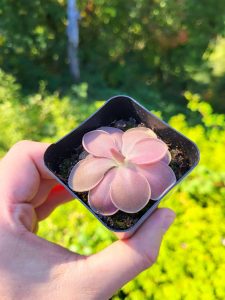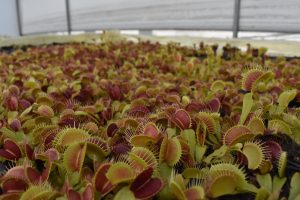Carnivorous plants are loved for their captivating ability and incredible specialization to capture and digest insects and other critters. These remarkable plants have evolved to thrive in nutrient-poor environments by adapting to glean nutrients from insects and other organisms. But have how often do carnivorous plants need to eat? Can carnivorous plants survive without insects? In this article, we’ll explore the fascinating world of the diet of carnivorous plants and shed light on their behavior when insects are scarce.

Carnivorous Plants: Adapt or Perish!
Carnivorous plants have adapted to habitats where the soil lacks nutrients like nitrogen, phosphorus, and potassium. To compensate for this deficit, these plants have developed specializations to capture, dispatch, digest, and absorb nutrients from insects, spiders, and even small vertebrates.
Some of the most well-known carnivorous plant species include the Venus flytrap (Dionaea muscipula), pitcher plants (Sarracenia), sundews (Drosera), and butterworts (Pinguicula) have their own unique method of luring, capturing, and digesting prey.
How Carnivorous Plants Eat
- Venus Flytrap: This is the most well known carnivorous plant. This plant has hinged traps with sensitive trigger hairs. When an insect or critter touches these triggers, the trap closes very quickly, ensnaring the prey.
- Pitcher Plants: Their specialized leaves contain a liquid that traps insects. Many species produce an abundance of nectar to attract insects to a precipice above their mouth. Once insects slip into or otherwise enter the pitcher, they can become trapped in the acid and fail to escape. This can lead to the organism expire in the digestive enzymes.
- Sundews: These plants have sticky dew covered hairs that attract and trap insects. Once caught, the prey has difficulty getting free often suffocating. The plant’s enzymes then break the organism down.
- Butterworts: These plants have succulent looking leaves covered in sticky mucousy substance that emits slight fungal odor typically only detected by insects. Organisms that land on the leaves become trapped then slowly dissolve to a state that allows the plant to extract its nutrients.

Surviving Without Insects
While carnivorous plants have evolved to absorb organisms for nutrition, they do have strategies to survive when insects are scarce. Here are some interesting facts that may help shed some light on their requirements.
- Photosynthesis: Like almost all plants, carnivorous plants can photosynthesize to produce energy from sunlight! This means that while nutrients are essential for robust, lush growth; the plant can survive without insects in many cases though they may not look their best.
- Nutrient Storage: Carnivorous plants are experts at storing nutrients obtained from their past prey. These stored nutrients can — in the case of Venus Flytraps, Sarracenia, and some Sundews — sustain them over their winter dormancy; or give the plant wonderful continuous growth even in periods without much food. We strive to sell our plants in a state where they can subsist without nutrients for a long time so you don’t have to worry about them for some time while you gather your choice of plant food!
- Alternate Food Sources: Although we do not recommend adding nutrients/fertilizer to the soil of your carnivorous plants unless you are an expert in carnivorous plants, some plants will gain nutrients from their medium. Some Sarracenia can tolerate added fertilizer to their soil but extreme caution should be taken in doing this.
- Reduced Growth: When faced with a scarcity of prey, carnivorous plants often slow their growth and conserve energy until more food is available. Venus Flytraps, some Sundew species, and Sarracenia which grow in the Northern Hemisphere often will go dormant when light is low and food is not as available. They will re-emerge in the spring when the sun is out and food is present.
Conclusion
Carnivorous plants are incredible organisms that have extraordinary adaptations to thrive in nutrient-poor environments. While they are specialized in ingesting small organisms and insects, they do not entirely depend on them for survival. Through methods such as photosynthesis, nutrient storage, and other strategies, these plants can endure food scarcity and continue to grow and thrive long term.
In conclusion, carnivorous plants are not solely reliant on insects to survive. They have evolved to be resourceful and resilient, making them an amazing feat of nature that continue to fascinate botanists and plant enthusiasts alike.
We hope this article has been helpful and put some worry to rest about growing these plants. These plants are adaptive and survivors in their own right, capable of facing the challenges of their environments.
Please message us with any corrections, or questions about this or any other article!
https://www.traditionrolex.com/34